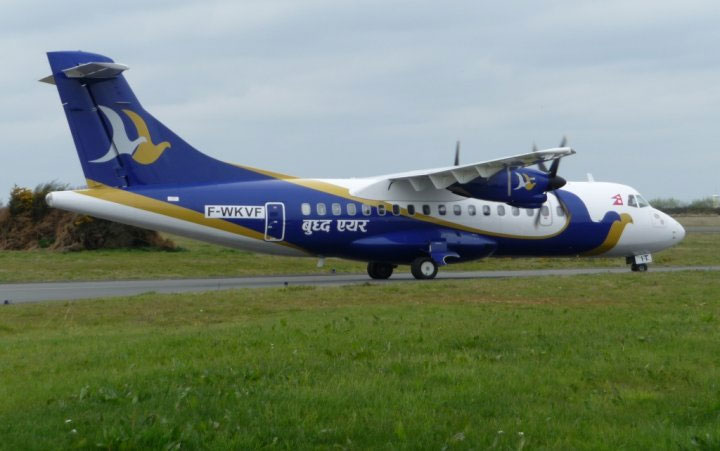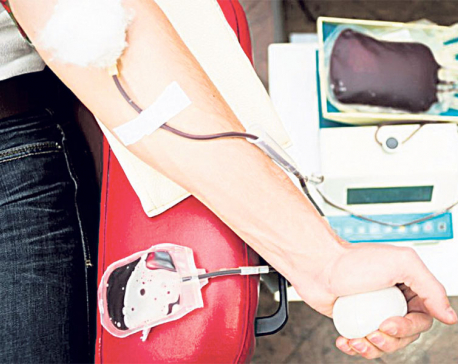
OR
All you need to know about safety measures at Buddha Air (with video)
Published On: July 6, 2017 11:05 AM NPT By: Republica | @RepublicaNepal

KATHMANDU, July 6: News on flight safety hovers around the Nepali media constantly, with frequent unfortunate news. As many airlines have made their flight in Nepal, both in domestic and international scope, among the few reliable domestic airlines, Buddha Air tops the list.
We conducted a poll among 100 passengers and 80 of them voted Buddha as the safest, among others. Here, we wanted to know the secret, we paid them a visit, and now sharing you 'the how'.
Since 1997, Buddha Air has been a regular name for Nepali sky, and as of now, two Beechcraft 1900D, three ATR 72-500 and three ATR 42-300 aircrafts make its fleet, flying to over 13 domestic and international destinations. As the number of years in experience and aircrafts has gone up, we found out that Buddha maintains a standard flight operation system.
Flight Operations at Buddha Air is guided by the operation manual to ensure safe and smooth operation. To provide the customers with safe, efficient and comfortable service, Buddha Air has put Safety Management System (SMS) in place which helps monitor, identify and implement the safety standards.
For this reason, it maintains an average of 60 hours flight time per crew per week even if the Civil Aviation Authority of Nepal’s (CAAN) limitation is 100 hours per month. This ensures that the crew is well rested and free of stress which decreases the likelihood of making mistakes during the flight which in turn improves the safety.
Watch video:
Every crew is provided with the training that exceeds the requirements set by the CAAN. For example, CAAN requires the crew to have at least 60 minutes of PPC (Pilot Proficiency Check) training every 6 months but Buddha Air steps it up a notch and provides the total of 4 hours of PPC training to the crew every six months.
Each crew also gets flight emergency simulation training. While other airlines perform these training simulations here in Nepal, Buddha Air conducts all of its training simulations abroad where the crew gets better training. The management also conducts different trainings and briefings throughout the year.
One of them is "the Pre-monsoon Briefing" which is conducted every year for all the crew members before the start of the monsoon to ensure additional safety measures. Other employees from flight operations department are also provided with a proper training based on their job descriptions.
Buddha Air has Flight Data Monitoring (FDM) system in place which allows it monitor the activities of its aircrafts during the flight. It routinely captures and analyses the recorder data which is then used to identify the risks and take appropriate safety measures. In-depth analysis of the data obtained from the FDM system can be used to assess the performance of the crew or to find a safety precaution for future events. To ensure further operational safety, Buddha Air has been conducting internal safety audits.
Ten auditors from Buddha Air have been certified by IATA (International Air Transport Association) to perform corporate quality assurance of all the departments of the company. The auditors provide a report to the management after the completion of the audit which then takes necessary actions based on the recommendation provided by the auditors. It usually means that the concern regarding safety in all the departments will be addressed.
"We put the safety first, and hence we leave no issue uncheck to maximize the safety", says U.K. Shrestha, Chief Operation Engineering. "Buddha Air recently built its own closed door hangar as well. It is equipped with a maintenance facility, which is the first of its kind in Nepal.
Rather than flying its aircrafts abroad for maintenance, it can now be done here in Nepal", adds Shrestha. Having access to this kind of facility on top of regular audits ensures that the safety in flight operations is not compromised.
The promise made to the public is kept well by the company. Kudos! To all the efforts!
You May Like This

All you need to know about allergies
Allergies are an incredibly common condition. As Dr Amit Amatya, associate professor and dermatologist at Patan Academy of Health Science... Read More...

Saving lives; Things you need to know before you donate blood
Blood donations campaigns are always taking place around the city. And though many of us might want to step up... Read More...

Earth Day 2018: Everything you need to know
People around the world will come together this weekend to celebrate the planet and to take action to protect it. Read More...





Just In
- Nepalgunj ICP handed over to Nepal, to come into operation from May 8
- Nepal to gift two elephants to Qatar during Emir's state visit
- NUP Chair Shrestha: Resham Chaudhary, convicted in Tikapur murder case, ineligible for party membership
- Dr Ram Kantha Makaju Shrestha: A visionary leader transforming healthcare in Nepal
- Let us present practical projects, not 'wish list': PM Dahal
- President Paudel requests Emir of Qatar to initiate release of Bipin Joshi
- Emir of Qatar and President Paudel hold discussions at Sheetal Niwas
- Devi Khadka: The champion of sexual violence victims



_20240423174443.jpg)










Leave A Comment